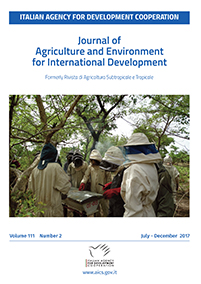Abstract
The study was designed to assess beekeeping management practices and challenges in eastern zone of Tigray. A semi-structured questionnaire, field observation and focal group discussion were employed to collect primary data. Randomly selected three districts were used for the study. A total of 120 respondents were selected from the zone and 40 beekeepers from each district for the study. Both primary and secondary data were collected. Beekeepers indicated that frame hive technology was most preferred. Even though, some equipments such as casting mold and honey extractor were not durable and available as required. Study reveals frame hive was more productive than tradition in the study area.Trees, shrubs and herbs were major honey bee flora identified in the study area. Accordingly, honey produced specially from Leucas abyssinica is a special white and highly demanded honey in Tigray. Beekeepers indicated large amount of honey was harvested in September and October. However, low amount of honey harvested in July and August of the year. Bee forage and absconding due to pestes are major constraint honey bee production in the study area. Honey bees required feed supplementation during dry season; higher supplements were made during February to March and followed by December to January. The commonly used supplements were sugar, shuro and barely flour (besso). The study suggests that bee forage, absconding and pests and predators were the most constraints in the study area.





